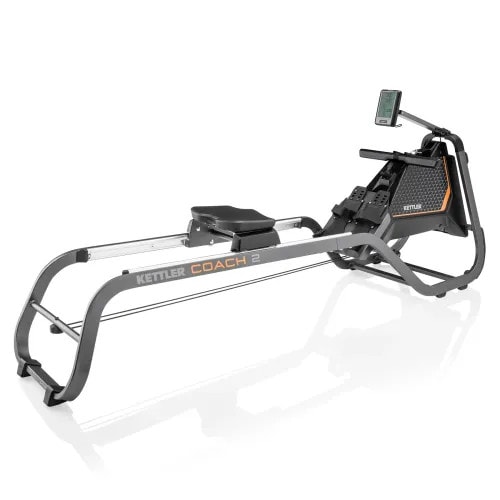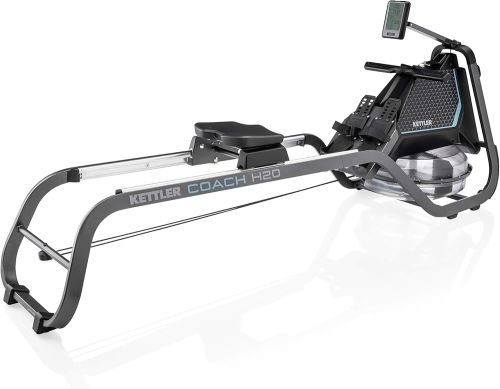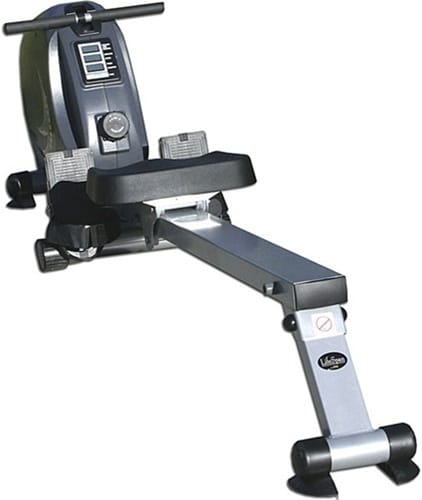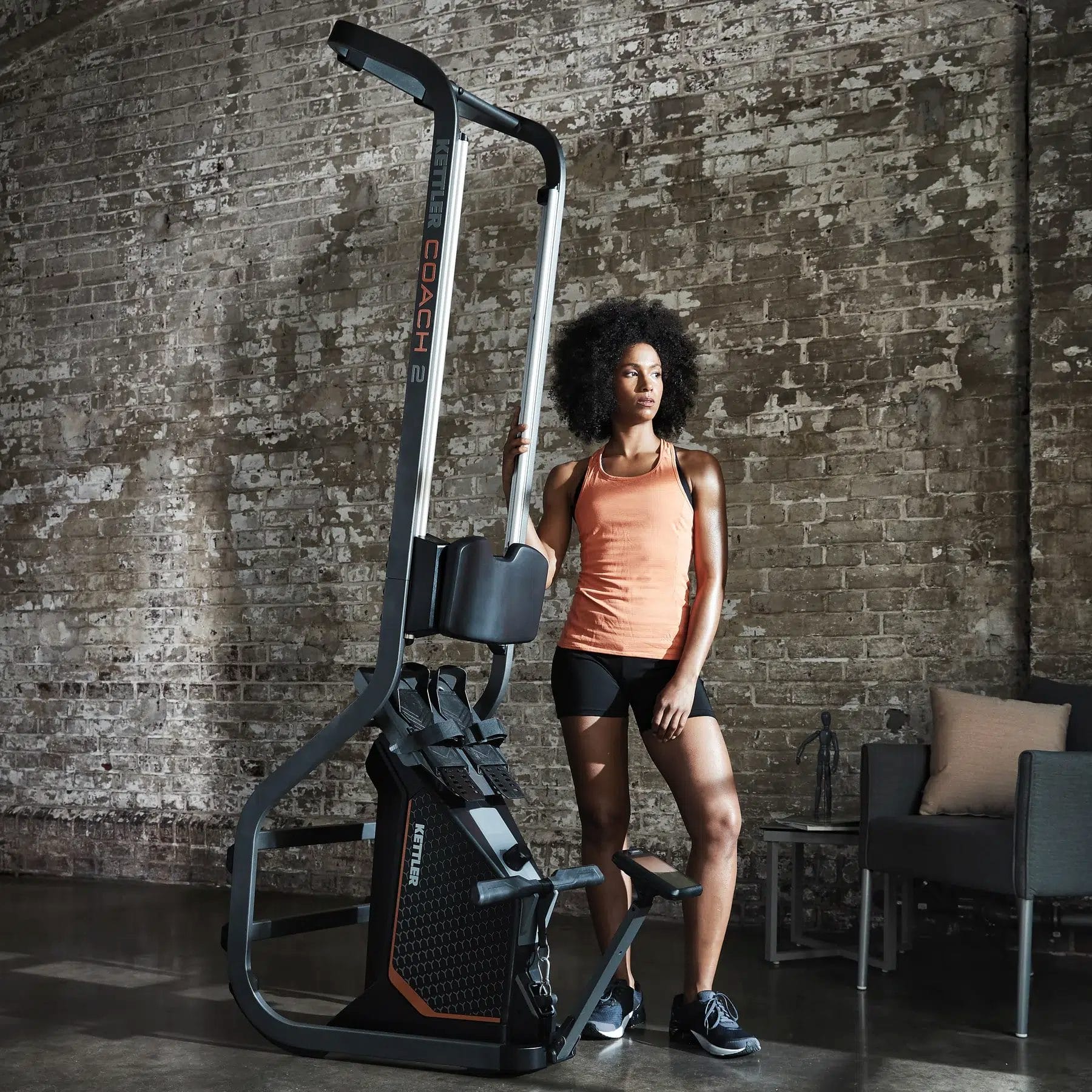
Are you looking for an efficient and effective way to improve your cardiovascular fitness? Look no further than rowing machines. These versatile fitness equipment offer a full-body cardio workout that engages multiple muscle groups while providing a low-impact exercise option. This blog will explore the many benefits of machines for cardiovascular fitness and guide you through mastering the rowing technique. Whether you’re a beginner or a seasoned fitness enthusiast, this comprehensive guide will help you optimize your rowing machine workouts and achieve your fitness goals.
Introduction
Rowing machines provide an excellent cardiovascular workout that offers a range of benefits. From improved heart health to increased calorie burn, rowing can enhance your overall fitness. Regular rowing workouts can help strengthen your heart and lungs, boost endurance, and promote weight loss. Additionally, rowing is a low-impact exercise, making it suitable for individuals of all fitness levels and minimizing the risk of joint strain or injury.
Motion Fitness is a reputable home gym equipment provider known for its commitment to quality and customer satisfaction. With a wide selection of machines and other exercise equipment, Motion Fitness offers reliable and durable products that enhance your fitness routine. When purchasing a cardio rowing machine, a trusted source like Motion Fitness ensures you’ll have access to high-quality cardio equipment that will last for years.
Understanding the importance of proper technique and form
While rowing machines for weight loss offer a low-impact workout, it’s crucial to understand and maintain proper technique and form to maximize the benefits and prevent injuries. This article will guide you through the different phases of rowing and provide detailed instructions on hand placement, leg engagement, core stability, and more. By mastering the rowing technique, you can perform efficient workouts targeting the right muscles and promoting overall fitness.
Getting Familiar with the Rowing Machine
Before diving into rowing workouts, it’s essential to familiarize yourself with the different components and features of a rowing machine. Understanding the machine’s layout and functionalities will help you make the most out of your workouts. Here’s a breakdown of the critical aspects to consider:
Rowing machines for sale have various parts that create resistance and simulate the rowing motion. The main components include the flywheel, handle, footrests, seat, and display console. Each of these components plays a crucial part smooth and practical rowing experience.
Understanding resistance levels and adjustments
Rowing machines offer different resistance levels that allow you to adjust the intensity of your workouts. Some devices use air resistance, while others use magnetic or water resistance systems. Understanding how to modify resistance will help you tailor your workouts to your fitness level and goals.
Ensuring proper seating and foot positioning
To maintain proper form and technique, it’s essential to ensure correct seating and foot positioning on the machine. Adjusting the seat height, securing your feet on the footrests, and maintaining proper posture are critical elements for a safe and effective rowing session.
Mastering the Rowing Technique
The rowing technique can be broken down into four distinct phases: the catch phase, the drive phase, the finish phase, and the recovery phase. Each step requires specific movements and muscle engagement to perform the stroke correctly. Let’s explore each step in detail:
The Catch Phase
The catch phase is the initial position of the rowing stroke. During this phase, focus on the following key points:
- Proper hand placement on the handle: Hold the handle with an overhand grip, keeping your wrists straight and relaxed.
- Initiating the movement with the legs: Begin the stroke by pushing off the footrests with your legs, keeping your arms extended and your back straight.
- Maintaining a strong core and relaxed upper body: Engage your core muscles to stabilize your body while keeping your shoulders relaxed and your upper body slightly forward.
The Drive Phase
The drive phase is where the power of the rowing stroke is generated. Follow these guidelines to optimize this phase:
- Engaging the leg muscles to push off the footrests: Transfer the power from your legs to the stroke by extending them forcefully while keeping your back straight.
- Activating the back and arm muscles to complete the stroke: Once your legs are fully extended, lean back slightly and pull the handle towards your upper abdomen using your back and arm muscles.
- Maintaining a smooth and controlled motion: Focus on maintaining fluid and controlled movement throughout the drive phase, avoiding jerky or abrupt motions.
The Finish Phase
The finish phase is the final part of the stroke, where you complete the movement. Pay attention to the following aspects:
- Fully extending the legs while leaning back slightly: Continue leaning back somewhat while fully stretching your legs to complete the stroke.
- Pulling the handle toward the upper abdomen: Use your back and arm muscles to pull the handle towards your upper abdomen, squeezing your shoulder blades together.
- Maintaining a solid and engaged core throughout the movement: Keep your core muscles engaged in providing stability and support during the finishing phase.
The Recovery Phase
The recovery phase allows you to return to the starting position and prepare for the next stroke. Here’s what to focus on during this phase:
- Reversing the sequence to return to the starting position: Start by straightening your arms, bending your knees, and sliding the seat forward.
- Straightening the arms, bending the knees, and sliding forward: Move in a controlled and fluid motion, allowing your body to glide smoothly back to the catch position.
- Preparing for the next stroke with a controlled and fluid motion: Use this phase to prepare your body for the next stroke by maintaining a steady and controlled motion.
Structuring an Effective Rowing Workout
To make the most out of your rowing workouts, it’s crucial to structure them effectively. Consider the following elements when planning your sessions:
- Warm-up exercises to prepare the muscles and joints: Before starting your rowing session, it’s essential to warm up your muscles and joints. Incorporate dynamic stretches and light cardio exercises to increase blood flow, improve mobility, and reduce the risk of injury.
- Setting achievable goals for distance, time, or intensity: Establishing goals for rowing workouts will help you stay motivated and track your progress. Whether aiming for a specific distance, a set amount of time, or increasing the intensity of your workouts, having achievable targets will keep you focused and committed to your fitness journey.
- Incorporating interval training or steady-state rowing for endurance and calorie burn: Rowing workouts can be varied by incorporating interval training or steady-state rowing. Interval training involves alternating between high-intensity bursts and periods of active recovery, while steady-state rowing maintains a moderate intensity over an extended period. Both approaches have their benefits and can target different fitness goals.
Monitoring and Tracking Progress
Monitoring your progress is essential to track your improvements and stay motivated. Rowing machines have display consoles that provide valuable metrics such as distance, time, and strokes per minute. Utilize these features to monitor your workouts and set personal benchmarks for improvement.
Setting personal benchmarks and goals for improvement
Use the metrics provided by the machine to set individual standards and goals. Whether increasing your average speed, rowing a longer distance, or reducing your split time, having specific targets will help you stay focused and push yourself during each workout.
Exploring additional features like heart rate monitoring and pre-set programs
Many rowing machines offer additional features like heart rate monitoring and pre-set workout programs. Heart rate monitoring can help you gauge the intensity of your workouts and ensure you’re within your target heart rate zone. However, pre-set programs can provide structured workouts tailored to different fitness levels and goals.
Avoiding Common Mistakes and Injuries
To ensure a safe and effective rowing experience, it’s essential to be aware of common mistakes and how to avoid them. Some common errors in rowing technique include:
Understanding common mistakes in rowing technique
Rowing with improper form can lead to ineffective workouts and potential injuries. Some common mistakes to avoid include:
- Rounding the back: Maintaining a straight back throughout the rowing stroke is crucial to prevent strain on the lower back.
- Using too much arm strength: While the arms play a role in the rowing stroke, the power should primarily come from the legs and core. Avoid relying solely on your arms for propulsion.
- Hunching the shoulders: Keep your shoulders relaxed and down, avoiding hunching or tensing them up.
Maintaining proper posture and alignment to prevent strain
Proper posture and alignment are crucial to preventing stress and injuries. Ensure that your back is straight, your shoulders are relaxed, and your core is engaged throughout the rowing stroke. Avoid slouching or rounding your back, as this can stress your spine unnecessarily.
Listening to your body and adjusting intensity as needed
It’s essential to listen to your body during rowing workouts. If you feel any discomfort or pain, it’s a sign to adjust the intensity or take a break. Pushing through pain can lead to injuries and hinder your progress. Always prioritize safety and make modifications as necessary.
Supplementing Rowing with Strength and Flexibility Training
While rowing provides an excellent cardiovascular workout, incorporating strength and flexibility training into your routine can offer additional benefits. Consider the following:
Incorporating strength exercises for complementary muscle development
Rowing primarily targets the muscles in your legs, core, back, and arms. To create a well-rounded fitness routine, include strength exercises that target other muscle groups. Squats, lunges, push-ups, and rows are just a few examples of exercises that can complement your rowing workouts.
Stretching and mobility exercises to maintain flexibility and prevent muscle imbalances
Flexibility and mobility are essential for maintaining proper form and preventing muscle imbalances. Incorporate stretching exercises that target your major muscle groups, focusing on areas such as your hips, hamstrings, shoulders, and chest. Additionally, mobility exercises like shoulder rotations and hip openers can enhance your range of motion and overall performance.
Creating a well-rounded fitness routine for overall health and fitness
Combining rowing with strength and flexibility training can make a well-rounded fitness routine promoting overall health and wellness. Incorporating various exercises ensures you’re targeting different muscle groups, improving cardiovascular endurance, and maintaining flexibility.
Conclusion
Rowing machines offer a fantastic opportunity to improve cardiovascular fitness, strengthen muscles, and achieve overall health and well-being. By understanding the benefits of rowing, mastering the technique, structuring effective workouts, and incorporating supplementary exercises, you can unlock the full potential of this versatile cardio exercise.
Visit Motion Fitness, a trusted source for cardio fitness equipment, to explore their high-quality rowing machines and take your workouts to the next level. Embrace the power of rowing, treadmill, exercise bike, and other cardio equipment and enjoy their numerous benefits to your fitness journey.







